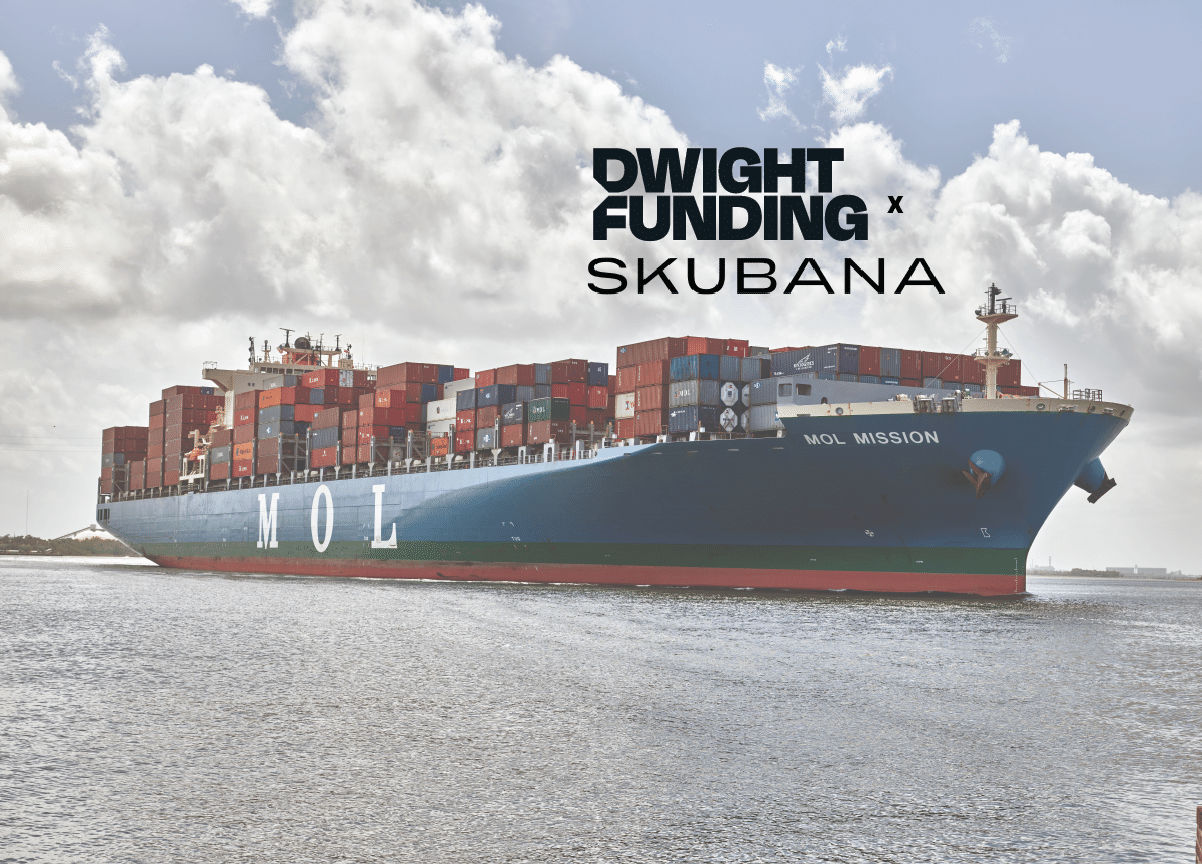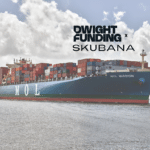Tackling Supply Chain Challenges to Meet Post-Pandemic Demand
1 June 2021

While there’s no denying supply chain logistics are always evolving, it’s safe to say 2020 caused disruptions that most consumer goods brands aren’t accustomed to seeing. Now, in 2021, there are new challenges companies must tackle to remain successful within the competitive eCommerce space. With that said, a shift to online retail, increase in consumer confidence, pent-up demand, and amassed savings all add up to a tremendous opportunity for digitally native brands.
2021, the year of fragile supply chains
Companies who survived the volatility of 2020 likely did so by way of getting lean, selling through inventory, and focusing on working capital. At times, the last year’s challenges have no doubt felt unwieldy. Suppliers and manufacturers from all over the world have largely been put to the test, encountering massive stock shortages, fulfillment delays, and lengthy backorders on common inventory items.
We expect that supply chain challenges will persist, to some degree, for the remainder of the year — driven by increased consumer spend on products, sustained appetite for the convenience of buying online, and catch up required from last year’s bottlenecks. And yet, in spite of 2021’s fragile supply chain network, companies are acclimating to these changes by addressing inefficiencies head on and seeking to work smarter, not harder.
6 supply chain challenges experienced in 2021
The COVID-19 pandemic continues to disrupt the supply chain ecosystem with new and unforeseen barriers to both productivity and profitability. The following are 2021’s biggest supply chain challenges faced by product-based businesses from all over the globe.
1. Scarce inputs
Insufficient inputs have been a concern since the pandemic began, due to an abrupt rise in consumer demand like never before. Even now, companies and suppliers alike are struggling to meet this demand in the midst of limited availability for many parts and materials. In speaking to growth stage brands in our network, we’ve encountered everything from furniture manufacturers facing foam shortages to bike manufacturers losing payment terms due to maxed out component suppliers. In fact, a recent survey conducted by the Institute for Supply Management (ISM) revealed ‘record-long lead times, wide-scale shortages of critical basic materials, rising commodities prices, and difficulties in transporting products across industries.’
In light of these scarce inputs, a brand’s ability to sustain its growth is highly dependent on working capital to weather downtime and ramp up for peak seasons.
2. Increasing freight prices
Contrary to initial expectations, the need for container shipping has increased considerably throughout the pandemic. With worldwide lockdown measures inciting a surge in eCommerce sales, the response has been a greater import demand for raw materials and manufactured consumer goods (a large percentage of which are moved in shipping containers). And since this demand was much more substantial than anticipated, it was met with insufficient shipping capacity and an unprecedented shortage of empty or available containers.
As it often does, this scarcity has led to a spike in pricing. In the last year, freight rates from China to the West Coast have jumped by 240%.
3. Demand forecasting
Demand forecasting in the middle of a global pandemic has added a new layer of complexity to many companies’ supply chain management. The onset of COVID-19 essentially shattered the forecasts for countless retailers and suppliers of consumer goods/services, leaving them without a guide as to how much inventory to stock or manufacture at any given time. The challenge, then, has come from trying to improve predictions for customer demand, while in many ways having to rely on gut instinct rather than data-driven analytics or reporting.
In this situation, supply chain managers are encouraged to abandon their bias, pursue new data sets for forecast models, and continually refine their results for the greatest accuracy.
4. Port congestion
Port congestion caused by the pandemic remains one of the top challenges for the world’s supply chains, seeing as port owners, carriers, and shippers are collectively still scrambling for a viable solution to this problem. Congestion occurs whenever a ship arrives at a port but cannot load (or unload) because that station is already at capacity. Although the loading/unloading process typically goes according to plan, labor shortages and social distancing associated with the pandemic has notably steered things off course, creating major bottlenecks at a number of busy global docks.
Due to this congestion and the backlog it has created, a myriad of companies are unable to get their goods out the door on time — which means carriers are also unable to adhere to their specified delivery commitments.
5. Consumer attitudes
Consumer attitudes and behaviors have changed in some big ways during the pandemic as well, like lowering the threshold for delivery times and raising the requirements for a positive customer experience. The challenge comes in having an agile supply chain that can harness the power of automations to optimize fulfillment and handle accelerated demand with ease. An excellent example of this supply chain flexibility comes from a multichannel order fulfillment services and inventory management software.
“The pandemic drove eCommerce demand to an all-time high. While a rise in order volume was a plus for merchants, new infrastructural needs and supply chain disruptions were major points of concern and the subsequent focus for our clients. Strategically, one of our biggest takeaways was the management of customer expectations through shared product forecasting, a defensive tactic that served to prevent negative experiences and maintain brand integrity.”
— Daniel Gdowski, VP of Marketing at ShipMonk
6. Digital transformation
When it comes to supply chain operations, digital transformation and IoT can be a mixed blessing. Still, there are several technologies with potential to enhance the way we approach the traditional supply chain, including: artificial intelligence, drones and robots, electric vehicles, and on-demand delivery. But even though these systems/services are intended to make eCommerce processes more efficient and cost-effective in the long run, the challenge lies in implementing them across a company’s existing supply chain.
It takes time and organizational realignment to put these technologies into action, particularly when working with multiple warehouses or omnichannel selling — and yet, supply chains must continuously evolve if they wish to stay ahead of the competition.
How to mitigate supply chain issues and inventory shortages post-pandemic
As you can tell, the pandemic has presented some unique supply chain challenges that eCommerce retailers continue to tackle on a daily basis. The good news is, there are a multitude of ways to mitigate major issues and avoid running out of inventory ever again. And though there’s not a one-size-fits-all approach to supply chain planning, it’s possible a combination of a few techniques will provide the most complete and comprehensive outcomes.
1. Stay liquid
Protect your business with flexible access to capital. After all, having cash on hand is often the difference between meeting demand and going out of stock. With sharp ebbs and flows of inventory expected in the coming months, it’s wise to consider a flexible line of credit that can be used to stock up on evergreen or perennial items in high demand and pay for priority manufacturing/shipping, or even air freighting.

2. Diversify sourcing
Broaden your range of sourcing, perhaps geographically, to increase choice and abundance within your supply chain. By developing a number of supplier relationships, it’s easier to become more flexible and adjust to a constantly changing market (i.e. during a prolonged pandemic that alters the entire global economy). Many times, diverse sourcing is the key to a brand’s success, as it readily locates goods and materials while maintaining profits, growing customers, and boosting innovation.
3. Work with a freight forwarder
Partner with a freight forwarder — or multiple — to manage and track the shipment of your goods. While freight forwarding companies are accountable for the transportation of products from one destination to the next, they can also arrange the entire process for shippers and negotiate the best price and/or fastest route. Retailers who work with a freight forwarder benefit from their vast knowledge of the supply chain, in addition to their ability to handle unforeseen obstacles in real-time (such as delayed goods or rerouted services). What’s more, freight forwarders are able to negotiate at scale by aggregating shipments of smaller retailers.
4. Identify alternative ports
Hedge your bets by seeking out alternative ports to meet your fulfillment needs and stay on schedule, regardless of unforeseen events or a sudden spike in customer orders. With DTC brands increasingly dependent on Asian imports, the sister ports of Los Angeles and Long Beach have become the bedrock of Transpacific trade. Given that these ports account for over 25% of North America’s ocean freight, it’d be wise to identify a fail safe in case of congestion or other inefficiencies.

5. Improve demand forecasting
Without fail, the best way to improve forecasting is by using automations to calculate these metrics on your behalf. eCommerce sellers are always looking for a balance between their inventory levels, warehousing costs, and the demand from their customers to prevent stockouts or inventory shortages. With automated inventory alerts, forecasting tools, and cash on hand, merchants can stock up with confidence based on predicted product demand and/or sales. What’s more, making forecasting a priority can streamline inventory counts and reduce excess overhead fees.
What we can expect the future of supply chains to look like
Throughout the last year, companies of all sizes have had to reimagine their operational strategies, in hopes of revitalizing their bottom line and retaining their customer base as much as possible. But amid global crisis and supply/demand difficulties, brands are somehow building resilience against future shocks and repairing their fault lines via SCM transformation.
The pandemic has not only amplified the need for greater supply chain optimization, but the need for faster decision-making, too. That’s why, according to Gartner (a leading research and advisory company): ‘Through 2024, 50% of supply chain organizations will invest in applications that support artificial intelligence and advanced analytics capabilities.’
What this means is, it will be increasingly important for supply chain leaders to adopt a holistic perspective with AI and analytics in the years to come, as these new technologies can be utilized in countless variations — from enhancing customer retention to maximizing supply chain visibility. Once you have artificial intelligence and analytics to inform inventory build, make sure you have flexible access to capital so that you can place your orders when you need to and ultimately, meet customer demand.
Post-pandemic supply chain FAQs
How do you solve supply chain challenges?
Though there’s not a one-size-fits-all approach to resolving supply chain challenges, using a few different techniques together can provide complete and comprehensive results. The best options for mitigating supply chain issues and avoiding inventory shortages include diverse sourcing, alternative ports, improved forecasting, and partnering with a freight forwarder.
Why is supply chain management so important?
Simply put, the success of an eCommerce business is intrinsically linked with the effectiveness of its supply chain network. When a company institutes a well-managed supply chain, it can optimize efficiency, reduce fundamental operating costs, and ultimately, translate to increased profits in both the short and long-term.
What’s the best way to avoid bottlenecks in the supply chain?
Companies with bottlenecks in their supply chain will likely benefit from using advanced automations to streamline their workflow. With innovative software automations, businesses can quickly eliminate supply chain congestion and amplify productivity across all departments.
We’re in the know so you don’t have to be. Subscribe to our newsletter to stay in the loop on the latest trends and news in the market.
Related Posts

Tackling Supply Chain Challenges to Meet Post-Pandemic Demand

News
Title

News
